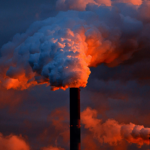Carbon FAQ
3 Min. Read Time
1. How do carbon markets work?
Very simply, the market puts a price on polluting. This creates an incentive for companies to reduce pollution in order to reduce costs. It turns capitalism on to the problem of climate change.
A carbon allowance represents the legal right to emit one metric ton of carbon dioxide or equivalent greenhouse gas. These allowances are to compliance vehicles that are part of mandatory programs called emission trading schemes (ETS) or cap and trade programs. Each program differs in detail, but the primary mechanism is as follows:
- The ETS auction a fixed number of allowances each year which essentially caps the amount of carbon that can be emitted by companies in its jurisdiction.
- Each year they reduce the cap by a linear reduction factor, eg. EU is 4.2% today.
- Companies can purchase these at auction or in the secondary market. Which is the “trade” part of cap and trade.
- These markets have also developed futures markets which provide a daily and fully transparent pricing source.
- Each year, the covered companies must measure their emissions and submit for redemption the appropriate number of allowances.
- This creates a catalyst to reduce emissions or become less profitable/competitive.
- To date, the ETS have been the most powerful policy tool for reducing global emissions.
Carbon allowances are not to be confused with carbon offsets which have voluntary participation and non-standardized supply. This makes measuring demand and supply difficult.
Carbon allowances, as they have transparent and declining supply, with inelastic demand, is what creates the compelling and low correlation investment thesis.
2. What are the main markets for CO2 emissions trading?
The largest markets are the European Union ETS, UK ETS, California Carbon Allowances (CCA), Regional Greenhouse Gas Initiative (RGGI). China’s ETS, which launched at the start of 2021, is still very new but will become the world’s largest market. South Korea has a vibrant market and New Zealand, albeit small, is a mature carbon market. Canada’s Quebec cap and trade program is linked to the CCA market.
3. Describe the IHS Markit Global Carbon Index.
The IHS Markit Global Carbon Index offers broad coverage of cap-and-trade carbon allowances by tracking the most traded carbon credit futures contracts, including European Union Allowances, UK Allowances, California Carbon Allowances, and the Regional Greenhouse Gas Initiative. The base weights of the index are Europe 60%, California 30%, UK 5%, and RGGI 5%. New markets will be added to the index as they become liquid and accessible. For example, the UK was added in December 2021. The index introduces a new measure for hedging risk and going long the price of carbon while supporting responsible investing.
4. What target do you have on the price of the CO2 contract for this year?
We see $100 as the start line. Until global prices are above $100 they will not be driving meaningful impact. From here we see considerable upside with 2022 targets around $100-$150. The blended price in the IHS index is in the low $50s for context. Our hope is that prices steadily rise so that we a) see strong carbon returns and b) see emission reductions without disruption.
5. Despite its good returns, why is this a not very well-known market?
Carbon allowance markets are still relatively new though in 2021 emerged as an asset class that can offer strong returns, potentially asymmetrically supported by policy, strong diversification benefits, potential inflation correlation, and lastly, but not least, alignment with environment and impact values. The IHS Markit Global Carbon Index utilizes futures because they are liquid, offer transparent pricing, and are exchange-traded allowing the index to take efficient exposures in relevant markets. Last year, the futures in these markets traded $683bn, over 100% growth from the previous year. If they were not well known and liquid before, they are today.
6. What are the risks that could plunge the price of the CO2 contract?
There are two main risks. Politics and innovation. The political risk is the real concern, in that as the price rises there may be push back from industry or consumers to rising costs. So far all of the programs have been steadfast in managing this risk. Further, the auction revenue earned from the programs and the ability for the programs to ease, provide the ability to mitigate this risk without complete failure of the system. That is, after a period of prolonged strong performance, there may be a cooling period. The Innovation risk is actually a long-term positive. The risk is that the industry decarbonizes faster than the supply of carbon allowances falls, which would lead to softer carbon prices. However, this is a) a great result for impact and climate change and b) the cap and trade programs are likely to readjust their tightening policy if there was a material change in demand. This tightening would likely correct equilibrium higher and get the price back to where industries are innovating again. So in the latter case, this is the volatility we should, and should want to, ride out.










